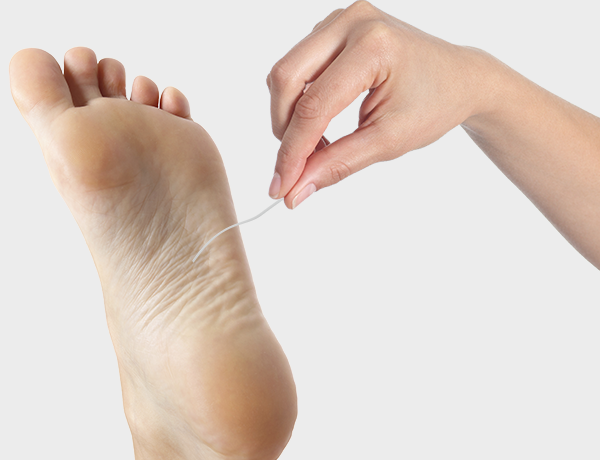 Last week we introduced the Treat Your Feet series for diabetes foot health. Now it’s time to get in depth for each of our four pillars of foot care: Clean, Cover, Circulate, and Check. This week, we examine why a thorough Clean is critical, and review the special considerations of washing, drying, and treating the delicate feet of individuals with diabetes.
Last week we introduced the Treat Your Feet series for diabetes foot health. Now it’s time to get in depth for each of our four pillars of foot care: Clean, Cover, Circulate, and Check. This week, we examine why a thorough Clean is critical, and review the special considerations of washing, drying, and treating the delicate feet of individuals with diabetes.
The changes in nerve sensation and blood circulation that diabetes can bring can cause the skin of the feet to become dry, calloused, and vulnerable to various wounds and sores. Daily cleansing can help keep your feet soft and supple, and also minimize the presence of bacteria, fungus, or other agents that could cause infection or similar concerns. Keep reading for tips on water safety, healthy moisturizing, and other habits for optimal foot cleanliness.
Wash
Dulled sensation in the feet means you may not receive pain signals from too-hot water. Therefore, to prevent injury, fill a bath with warm water, never hot. Instead of testing water using your feet, use a thermometer to ensure the temperature is between 90 and 95 degrees Fahrenheit, or dip your elbow in to check.
Soaking your feet actually dries out the skin, so keep bathing time short. Use a mild soap to cleanse your feet; as you wash, take the opportunity to look carefully for new developments or wounds. Rinse your feet clean with warm water (again, never hot).
Dry
Using a clean towel, gently pat your skin dry — vigorous rubbing could cause or worsen damage. Dampness can lead to skin breakdown, so take care to thoroughly dry all surfaces, including between your toes.
Protect
As soon as feet are clean and dry, add a protective layer of lotion to moisturize and soften your skin, which can also prevent cracking. Choose a lotion that is both fragrance-free and alcohol-free. Rub a small amount onto the tops and bottoms of your feet, but avoid the crevices between toes; again, excess moisture in that area can cause or worsen skin injury. A small amount of cornstarch or talcum powder sprinkled between the toes can help keep them dry and protected.
Diabetic neuropathy may change the level and type of sensation that you feel in your feet, but some extra care and attention can go a long way toward preserving their health and function. Adopting a daily foot cleaning ritual will help to keep skin soft, healthy, and able to heal. Next time, we’ll visit the best ways to Cover those clean feet with supportive socks and shoes.
No matter what your health challenge may be, Residential Home Health offers a range of services to help you work toward your health goals safely at home. Call (888)930-WELL (9355) to discuss your specific situation with a Home Care Specialist today, or click here to take our 60-second, 15-question Home Care Assessment.
{{cta(‘44893e99-97c2-42f8-936a-6798128c709b’)}}

